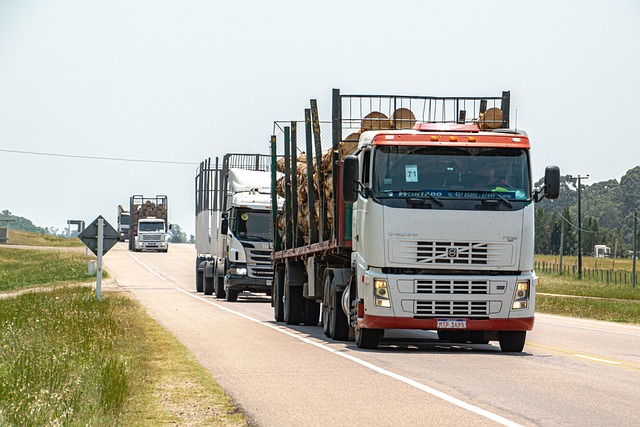Registering a car in California involves understanding specific requirements and gathering essential documents. This comprehensive guide walks you through the process, from obtaining a Vehicle Identification Number (VIN) verification to preparing all necessary paperwork. We’ll break down each step, highlighting common issues and solutions to ensure a smooth registration experience. By following these detailed instructions, you’ll be on your way to legally registering your vehicle in California.
- Understanding the Requirements for Car Registration in California
- Obtaining a Vehicle Identification Number (VIN) Verification
- Preparing Necessary Documents for Registration
- The Step-by-Step Process of Registering Your Car in CA
- Common Issues and How to Resolve Them During Registration
Understanding the Requirements for Car Registration in California

Before you can register your car in California, it’s crucial to understand the specific requirements for vehicle identification number (VIN) verification. This process ensures that your car meets safety and environmental standards set by the state. In California, all vehicles must undergo a VIN inspection to confirm their authenticity and condition before registration.
The VIN is a unique code that identifies your vehicle, and it plays a vital role in the registration process. A mobile VIN verification or inspection allows you to conveniently check your car’s history, including any outstanding issues or recalls, directly from your smartphone or tablet. This step is essential for ensuring compliance with California’s strict vehicle regulations, making the registration process smoother and safer for both you and the state.
Obtaining a Vehicle Identification Number (VIN) Verification

Obtaining a Vehicle Identification Number (VIN) verification is a crucial step in registering your car in California. This process ensures that your vehicle’s details match the information on record, helping to prevent fraud and ensuring a smooth registration process. A VIN inspection involves a detailed check of your car’s unique identification number, which can be done through various methods, including mobile vin inspectors who offer convenient, on-site services.
Mobile vin verifiers provide an efficient way to complete this requirement by coming to your location with the necessary equipment to perform a thorough VIN inspection. This option is particularly beneficial for those who may have difficulty visiting a DMV office or prefer the convenience of having the service done at their own time and place. By ensuring accurate VIN verification, you’re well on your way to successfully registering your vehicle in California.
Preparing Necessary Documents for Registration

Before you begin the registration process, gathering all the required documents is essential. One crucial step is to obtain a Vehicle Identification Number (VIN) verification report. This involves using a reliable mobile vin verifier or conducting a vin inspection to ensure the vehicle’s history is clear and accurate. The VIN number is unique to each vehicle, serving as its fingerprint, and it’s vital for identifying potential issues or undisclosed damage.
During this preparation phase, you’ll also need to gather documents like the title, registration certificates from previous states (if applicable), proof of insurance, and a valid driver’s license. Additionally, ensuring that all ownership information is up-to-date and accurate will streamline the registration process at the California Department of Motor Vehicles (DMV).
The Step-by-Step Process of Registering Your Car in CA

Registering a car in California involves several straightforward steps that can be completed quickly with the right preparation. It begins with gathering essential documents like your vehicle’s registration certificate from the previous state, proof of insurance, and a valid driver’s license. Next, you’ll need to conduct a Vehicle Identification Number (VIN) verification through a mobile vin inspection or online service to ensure the car’s history is clean and free from any outstanding issues.
Once the VIN verification is complete, visit a California Department of Motor Vehicles (DMV) office with your documents. You’ll be required to pass an emissions test and pay the registration fees, which vary based on your vehicle type and age. After all requirements are met, you’ll leave with a new California car registration and license plate, marking the successful completion of the process.
Common Issues and How to Resolve Them During Registration

When registering your car in California, common issues can arise due to various factors, from paperwork mistakes to technical glitches. One of the primary concerns is ensuring accurate VIN verification. A mobile vin verifier or mobile vin inspection can be a lifesaver here; these services allow you to verify the vehicle’s history and identify any potential red flags remotely.
If you encounter issues with the online registration process, make sure all documents are in order and updated. Double-check your ownership proof, insurance details, and vehicle identification number (VIN). In case of persistent problems, consider reaching out to the California Department of Motor Vehicles (DMV) for assistance. They provide guidance on common issues and offer support to ensure a smooth registration process.
Registering a car in California involves understanding specific requirements, obtaining a Vehicle Identification Number (VIN) verification, and preparing essential documents. By following the step-by-step process outlined in this article, you’ll ensure a smooth registration experience. Remember to address any common issues promptly to avoid delays. With the right preparation, you’ll be on your way to legal and safe California roads in no time, complete with your official VIN verification.
